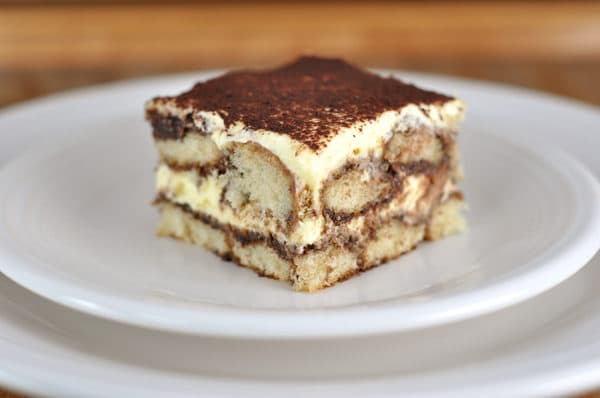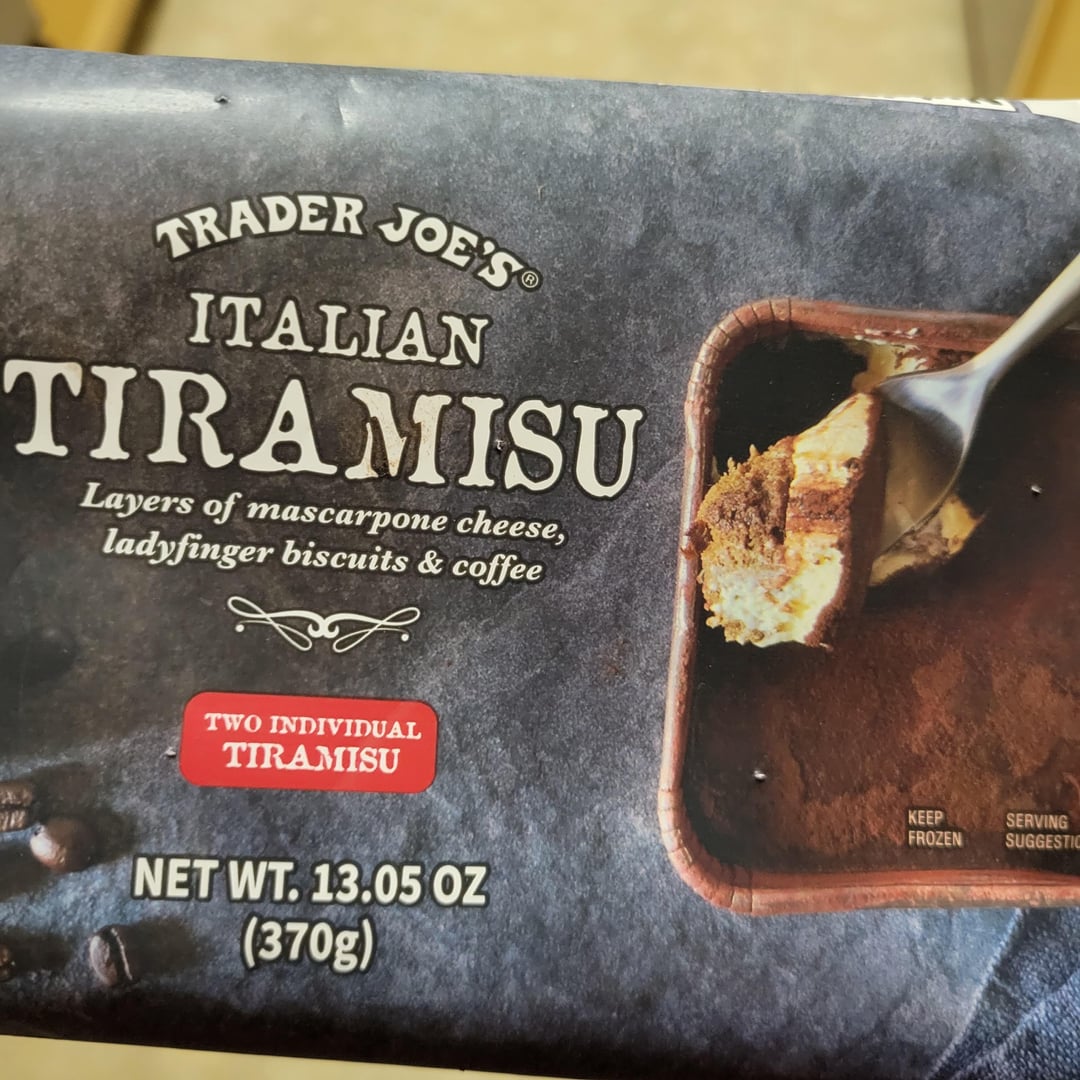Yes, tiramisu does contain caffeine. The caffeine comes from the coffee used in its preparation.
Now, let’s delve into the details. Tiramisu is a famous Italian dessert known for its rich and creamy texture. It’s made with layers of coffee-soaked ladyfingers, mascarpone cheese, and cocoa powder. The presence of coffee is what introduces caffeine to this delicious treat.
Understanding the caffeine content in tiramisu is essential, especially for those sensitive to caffeine or trying to limit their intake. In this blog post, we’ll explore how much caffeine tiramisu typically contains and whether it can affect your caffeine consumption. Stay with us to uncover the fascinating blend of flavors and ingredients that make tiramisu a beloved dessert worldwide.

Credit: bakingamoment.com
Introduction To Tiramisu
Tiramisu is a beloved Italian dessert. It combines layers of coffee-soaked ladyfingers with creamy mascarpone cheese. Many people enjoy its rich flavor and unique texture. But does it contain caffeine? Let’s explore the origins, history, and key ingredients of this delightful dessert.
Origins And History
Tiramisu’s origins are a bit mysterious. Some say it was first made in the 1960s in Treviso, Italy. Others believe it has roots going back even further. One thing is certain: Tiramisu means “pick me up” in Italian. This name likely comes from its ingredients, which include coffee and sometimes alcohol. These ingredients give Tiramisu its signature taste and a bit of a kick.
Key Ingredients
The key ingredients in Tiramisu are simple yet flavorful. They include:
- Ladyfingers: These are soft, sponge-like cookies.
- Coffee: Typically, strong espresso is used.
- Mascarpone Cheese: This is a rich, creamy Italian cheese.
- Eggs: Used to make the creamy filling.
- Sugar: Adds sweetness to the dessert.
- Cocoa Powder: Sprinkled on top for a final touch.
These ingredients come together to create a dessert that is both light and indulgent. The coffee in the recipe does mean that Tiramisu contains caffeine. For those sensitive to caffeine, this is an important point to consider.
Traditional Tiramisu Recipe
Tiramisu is a classic Italian dessert. It is loved by many for its rich flavors and creamy texture. Traditionally, it contains layers of coffee-soaked ladyfingers, mascarpone cheese, and cocoa. Many wonder whether this delicious treat contains caffeine. The answer lies in the traditional recipe.
Ingredients List
- 6 large egg yolks
- 3/4 cup granulated sugar
- 1 cup mascarpone cheese
- 1 1/2 cups heavy cream
- 2 cups strong brewed coffee, cooled
- 1/4 cup coffee liqueur (optional)
- 2 packages ladyfingers
- Unsweetened cocoa powder, for dusting
- Dark chocolate shavings, for garnish (optional)
Step-by-step Preparation
First, whisk the egg yolks and sugar together. Do this until the mixture is thick and pale. This step ensures the base is creamy and rich.
Next, add the mascarpone cheese. Mix until smooth. In another bowl, whip the heavy cream to stiff peaks. Gently fold the whipped cream into the mascarpone mixture. This makes the filling light and fluffy.
Combine the brewed coffee and coffee liqueur in a shallow dish. Dip each ladyfinger into the coffee mixture. Do this quickly to avoid sogginess. Arrange the soaked ladyfingers in a single layer in a baking dish.
Spread half of the mascarpone mixture over the ladyfingers. Repeat the layers with the remaining ladyfingers and mascarpone mixture. Dust the top with cocoa powder. Chill in the refrigerator for at least 4 hours. This allows the flavors to meld together.
Before serving, garnish with dark chocolate shavings if desired. Enjoy your homemade traditional tiramisu!
Role Of Coffee In Tiramisu
Tiramisu is a popular Italian dessert. The taste is rich and creamy. One key ingredient is coffee. Coffee gives tiramisu its unique flavor. But does it have caffeine? Let’s explore the role of coffee in tiramisu.
Types Of Coffee Used
Different types of coffee can be used in tiramisu. The most common is espresso. Espresso is strong and flavorful. Some recipes use brewed coffee. Brewed coffee is milder than espresso. Instant coffee is another option. It is quick and easy to use.
Here is a table of different types of coffee used in tiramisu:
| Type of Coffee | Strength |
|---|---|
| Espresso | Strong |
| Brewed Coffee | Mild |
| Instant Coffee | Medium |
Impact On Flavor
Coffee has a big impact on tiramisu’s flavor. Espresso gives a rich, bold taste. It makes tiramisu intense and deep. Brewed coffee gives a lighter taste. It is less intense but still delicious. Instant coffee can vary. It depends on the brand and strength.
The choice of coffee affects the dessert’s overall flavor. Strong coffee makes tiramisu more robust. Mild coffee makes it gentler. Choose the type of coffee based on your preference.

Credit: www.pinterest.com
Caffeine Content In Tiramisu
Tiramisu, a beloved Italian dessert, is known for its rich flavors. It combines layers of coffee-soaked ladyfingers with creamy mascarpone cheese. The coffee used in tiramisu raises questions about its caffeine content. Many wonder if this delightful treat can give them a caffeine boost. Let’s explore the caffeine levels in tiramisu.
Caffeine Levels In Coffee
Coffee is a key ingredient in tiramisu. It is often made with espresso or strong coffee. Espresso has higher caffeine levels compared to regular coffee. An average shot of espresso contains about 63 milligrams of caffeine. Regular coffee has about 12 milligrams of caffeine per ounce. The amount used in tiramisu depends on the recipe. Some use one shot of espresso, while others use more.
Factors Affecting Caffeine
Several factors influence the caffeine content in tiramisu. The type of coffee used is one factor. Espresso, being stronger, adds more caffeine. The amount of coffee used in the recipe also matters. More coffee means more caffeine. The soaking time of the ladyfingers also plays a role. Longer soaking can increase caffeine absorption.
Other ingredients can affect caffeine levels too. Some recipes use coffee liqueur, which contains caffeine. The brand and type of coffee liqueur used can change the caffeine content. These factors combined determine how much caffeine is in each serving of tiramisu.
Comparing Caffeine In Tiramisu And Other Desserts
Wondering if tiramisu has caffeine? Let’s compare its caffeine content with other desserts. We’ll look at chocolate-based desserts and coffee-flavored treats.
Chocolate-based Desserts
Chocolate desserts often contain caffeine. The amount depends on the chocolate type. Here’s a quick comparison:
| Dessert | Caffeine Content (mg per serving) |
|---|---|
| Chocolate Cake | 20-30 |
| Chocolate Brownie | 15-25 |
| Chocolate Mousse | 10-20 |
Chocolate cake and chocolate brownies have more caffeine than many expect. Dark chocolate has higher levels than milk chocolate. Always check the ingredients.
Coffee-flavored Desserts
Coffee-based desserts are known for their caffeine. Let’s compare:
| Dessert | Caffeine Content (mg per serving) |
|---|---|
| Tiramisu | 5-10 |
| Coffee Ice Cream | 15-20 |
| Espresso Cake | 30-50 |
Tiramisu has less caffeine than coffee ice cream. Espresso cake has the highest caffeine among coffee desserts. Tiramisu uses coffee-soaked ladyfingers, so caffeine content is lower.
Remember, tiramisu has caffeine, but not as much as other coffee-flavored desserts. Next time you enjoy a slice, you’ll know what to expect.
Decaffeinated Tiramisu Options
Many people love tiramisu but worry about the caffeine content. Traditional tiramisu uses coffee, which contains caffeine. For those sensitive to caffeine or avoiding it, there are decaffeinated options. Here, we explore ways to enjoy a delicious, decaf tiramisu.
Using Decaf Coffee
One easy way to make decaffeinated tiramisu is to use decaf coffee. Decaf coffee has most of the caffeine removed but retains the rich coffee flavor. Simply substitute regular coffee with decaf in your recipe.
| Ingredient | Regular Tiramisu | Decaf Tiramisu |
|---|---|---|
| Espresso | Regular Espresso | Decaf Espresso |
| Instant Coffee | Regular Instant Coffee | Decaf Instant Coffee |
Using decaf coffee ensures you get the same great taste without the caffeine. It is an easy swap and keeps the dessert authentic.
Alternative Ingredients
Another way to make decaf tiramisu is by using alternative ingredients. Some options include:
- Hot Chocolate: Replace coffee with hot chocolate for a sweet twist.
- Cocoa Powder: Mix cocoa powder with hot water as a coffee substitute.
- Herbal Coffee: Use herbal coffee, which is naturally caffeine-free.
These alternatives provide unique flavors while keeping the tiramisu caffeine-free.
In summary, there are easy ways to make decaf tiramisu. Use decaf coffee or try alternative ingredients. Enjoy your tiramisu without worrying about caffeine.
Health Considerations
Tiramisu is a beloved dessert enjoyed by many. But does it have caffeine? This question often arises due to its ingredients. Health considerations are crucial, especially for those sensitive to caffeine or watching their diet. Let’s explore the key points.
Caffeine Sensitivity
Many people are sensitive to caffeine. Even small amounts can affect them. Tiramisu contains coffee and sometimes cocoa. Both have caffeine. A typical serving of tiramisu has about 40-60 mg of caffeine. This amount can vary based on the recipe and portion size. If you are caffeine-sensitive, keep this in mind.
Nutritional Aspects
Tiramisu is rich in calories and fat. It contains layers of mascarpone cheese, eggs, sugar, and cream. Below is a nutritional breakdown for a standard serving size (100g):
| Nutrient | Amount |
|---|---|
| Calories | 240 |
| Fat | 15g |
| Saturated Fat | 9g |
| Sugar | 18g |
| Protein | 4g |
These values can vary. Different recipes may have different ingredients. For those watching their diet, consider these nutritional aspects. It is important to enjoy tiramisu in moderation.
Conclusion And Final Thoughts
Tiramisu is a beloved dessert with a rich history. It is creamy, sweet, and has layers of flavors. One question many have is: Does tiramisu have caffeine? Let’s summarize the key points and provide some tips for enjoying this delightful treat.
Summary Of Key Points
- Caffeine Content: Tiramisu contains coffee, which has caffeine. The amount varies.
- Ingredients: Ladyfingers, mascarpone cheese, eggs, sugar, cocoa powder, and coffee are the main ingredients.
- Alcohol: Some recipes include alcohol like Marsala wine or rum.
- Portion Size: The caffeine content is low per serving. It is usually safe for most people.
Tips For Enjoying Tiramisu
- Moderation: Enjoy tiramisu in small portions to limit caffeine intake.
- Homemade: Make tiramisu at home. You can control the ingredients and caffeine levels.
- Alternatives: Use decaffeinated coffee to reduce caffeine.
- Check Labels: If buying, read labels for caffeine and alcohol content.
- Pairing: Pair with a glass of water or milk to balance the flavors.
Tiramisu can be a delightful part of your dessert options. Understanding its ingredients helps you enjoy it responsibly. Whether homemade or store-bought, this dessert is worth savoring.

Credit: www.melskitchencafe.com
Frequently Asked Questions
Does Tiramisu Contain Caffeine?
Yes, tiramisu contains caffeine. The caffeine comes from the coffee used in the recipe.
How Much Caffeine Is In Tiramisu?
The caffeine content in tiramisu varies. It depends on the amount and type of coffee used.
Can You Eat Tiramisu If Sensitive To Caffeine?
If you’re sensitive to caffeine, limit your tiramisu intake. The dessert contains coffee, which has caffeine.
Is There A Caffeine-free Version Of Tiramisu?
Yes, you can make caffeine-free tiramisu. Use decaffeinated coffee or omit the coffee entirely.
Conclusion
Tiramisu does contain caffeine, mainly from coffee and cocoa. The amount is usually small. Most people can enjoy it without worries. Sensitive to caffeine? Have a small portion. Always check ingredients if you’re unsure. Tiramisu can be a delightful dessert for many.
Enjoy in moderation. Happy tasting!
